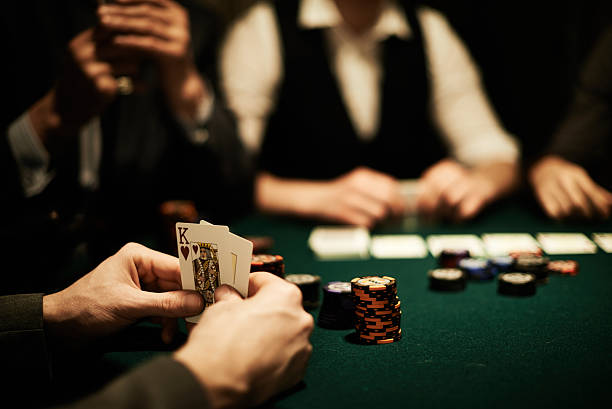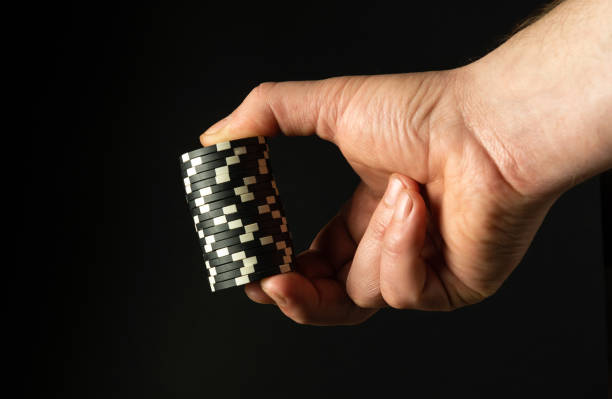Crown Yourself King Of The Table With These Tips For Texas Holdem
Are you ready to take your Texas Holdem game from average to amazing? Then it’s time for you to learn the secrets of becoming a king at the table. With these tips and strategies, you can become an undisputed master of Texas Holdem in no time. From learning to recognize good starting hands to utilizing pot odds, this guide will give you all the information you need to make yourself into an unbeatable poker player. Read on and start honing your skills today!

Photo by iStockphoto
1. Start With Texas Holdem Online
Why should you play Texas Holdem online? Because there are numerous advantages to playing online versus in person. One benefit of playing online Texas Holdem is the convenience. You can enjoy playing from the comfort of your own home and at any time you want. Moreover, the stake levels of online games are usually lower than in-person games, which is ideal for beginners who want to practice without risking large sums of money.
Third, online poker platforms offer the ability to multi-table, meaning you can play multiple games or tables simultaneously, increasing your hands per hour and, in turn, your potential winnings. Finally, many online poker sites offer free Texas Holdem games, providing new players with a great opportunity to practice their skills and improve their strategies without risking any money.
2. Learn to Recognize Weak Starting Hands
One of the key advantages of recognizing and folding weak starting hands is that it helps you to conserve your chips for when you have a better chance of winning. Because playing weak hands will more likely result in losing, it’s best to fold and wait for a stronger starting hand. Good starting hands are typically high pairs (e.g., A-A, K-K, Q-Q), suited high cards, and high connectors (e.g., Q-J, K-Q, A-K). These types of hands give you a better chance of hitting a strong hand on the flop and winning the pot.
On the other hand, bad starting hands include low-value cards that aren’t paired, are of different suits, or are disconnected. Medium to low-value pairs and suited connectors are playable in a late position if there hasn’t been much betting going on, but it is advised to fold these hands if you are in an early position. Beginners can refer to a Texas Holdem cheat sheet to get a better understanding of what starting hands to play in what positions.

Photo by iStockphoto
3. Avoid Playing Too Passively
To increase the chances of success in poker, it’s important to avoid playing too passively since it can be a disadvantage and hinder the player’s performance. Firstly, passive players typically won’t make much money in the long run, as they tend to miss out on potential winnings that come with bigger bets and raises.
Additionally, passive players are more vulnerable to bluffs and deception by aggressive opponents because they are less willing to take risks with their own hands, which can result in losing the game. While playing passively can be a good strategic choice at times, it’s essential to also be more aggressive to prevent being exploited.

Photo by iStockphoto
4. Don’t Bluff Too Often
Bluffing can be an effective strategy to throw off your opponents and win hands you wouldn’t have normally won, but doing it too often can make you predictable. Once opponents catch on to your strategy, they’ll be more inclined to call your bets, and you’ll end up losing more money than intended. Additionally, bluffing too often can lead to a habit of impulsive decision-making and a lack of discipline, resulting in unnecessary risks and ultimately, poor gameplay.
Now, let’s discuss when you should bluff. Bluffing is most effective when you are in a late position because it allows you to have more information about your opponents’ hands. This makes it easier to determine whether or not they are likely to fold. You also shouldn’t bluff a tight player that has already bet, as they likely have a strong hand and won’t fold.
5. Calculate Pot Odds Before Calling
Pot odds are the ratio of the amount of money currently in the pot, relative to how much you have to call to stay in the hand. By converting this ratio into a percentage and comparing it to the odds of hitting a winning hand, you can determine whether or not it’s worth calling. For example, if there’s $20 in the pot and you have to call $5, your pot odds are 20:5 or 4:1, which can be converted into a percentage of 20% by dividing 5 by 25 (5+20).
Next, let’s calculate the odds of hitting your hand. For example, if you’re holding two hearts and the flop shows two more, then you have nine outs for a flush. The rule of 4 and 2 states that you can multiply the number of outs by 4 to get the approximate percentage of hitting your hand on the turn, and by 2 for the percentage of hitting your hand on the river. In this example, you have a 36% chance of making your flush on the turn, and since your pot odds (20%) are lower than this, it’s worth calling.
Conclusion
From learning how to recognize and fold bad starting hands and utilizing pot odds, to avoiding playing too passively or bluffing too often, these tips will help you develop your skillset so that you can make yourself into a king at the table. With practice and dedication, anyone can become an unbeatable poker player. So start honing your skills today by signing up and playing at GGPoker, the world’s largest poker room!



